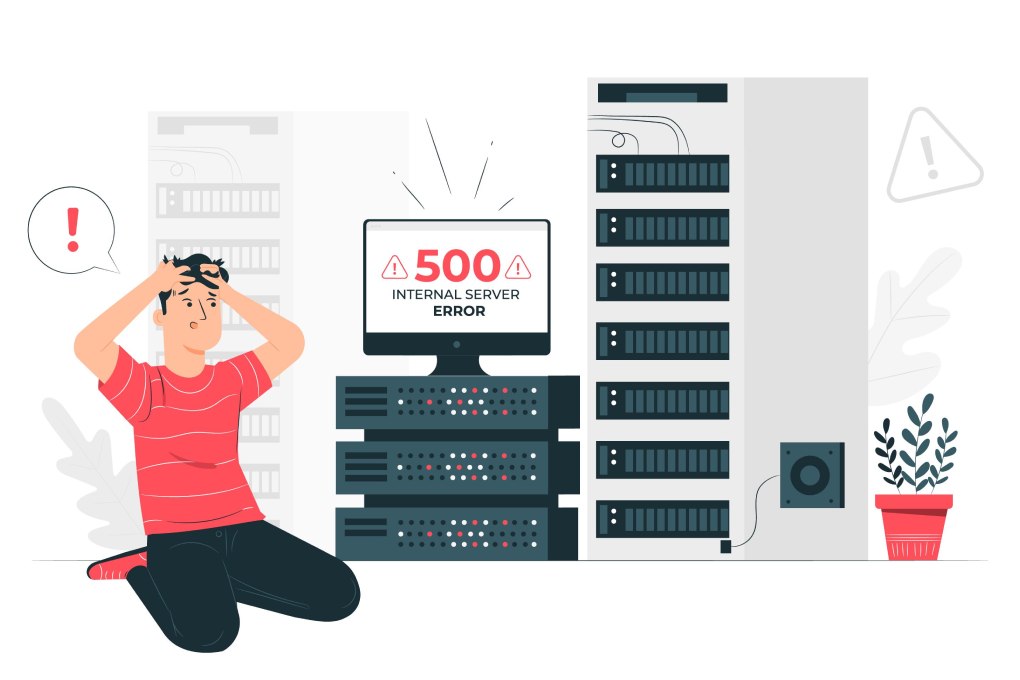Error 500: What Is It And How To Solve It?

The 500 error is one of the most common errors when we work with our website or our online store and, at the same time, one of the most cumbersome. This is an internal error with the connection to the server and indicates that after a request from a user while trying to connect to the server, an error has occurred. Still, it does not specify more details about it, and perhaps that is why the most cumbersome part. In this post, we will talk about this popular error and try to guide you toward possible solutions.
Table of Contents
Error 500: What Is It And How To Fix It
There are many ways to name it, and depending on which hosting you work with, you will see it named in one way or another. The 5 most common are:
- Error HTTP 500 Internal Server Error
- 500 Internal Server Error
- Temporary Error 500
- Internal Server Error
- HTTP 500 Internal Error
Whatever it is named, it is clear that when a user encounters a 500 error, the note on our website falls and can cause the loss of a potential client. Therefore, it is a priority to review any HTTP status code errors on our website, especially errors as crucial as the 500 or 404 errors.
Error 500: What Is It
An HTTP status code tells us that before a request to our server, it could not complete it. The problem is that it does not show us details of the causes of this error. The server informs the browser that the user is using an unexpected failure. It is, therefore, a failure about which we have little information a priori, and that is that the causes of this particular error can be multiple. The 500 error is associated with a server error in many cases, but it does not always have to be that way.
When a user or client requests to enter a URL through a browser, the server receives a request (open a web) and responds with a status code. If the status code is 200, everything goes well, and the client will therefore see his request completed and be able to access the website he requested. When the server responds with a 500 code, it indicates various failures in the server, but it is not possible to determine precisely what caused the problem.
Why Does The 500 Error Occur?
As we have already explained, the causes can be multiple, so the solutions can also vary. However, there are some common triggers for an Internal Server Error.
- Excessively long PHP timeout: When there is an ordinarily external resource that exceeds the usual PHP response timeout, it is pretty common to generate a 500 error.
- PHP memory limit exceeded: a process on your website has exceeded the memory limit and cannot be executed.
- Incorrect.htaccess: The wrong or damaged .htaccess file causes a 500 error in many cases. Many plugins change the .htaccess, so this is usually a probable cause.
- Error in the permissions of your files: when there is confusion with the access permissions of the files and directories, a 500 error occurs.
- Incompatibility with the PHP version: when we change the PHP version and have plugins or work with a template that is not compatible with this version, a 500 error will be generated.
If you have recently made any changes, the most common is that this change has caused the error. This is the case when new plugins are installed or updated in WordPress. If you have no idea, you can go to the error messages saved on your server.
How To Fix A 500 Error
As we can see, there are usually common causes of a 500 error. If you have updated your plugins and your templates or have made a significant change to your website, perhaps the smartest thing to do is restore the backup you had to do before making these changes. If this is not the case, we will see what possible solutions we can find for the most common causes of generating the 500 error.
PHP Memory Limit Exhausted
Many WordPress templates or processes require a higher PHP memory limit than what we usually have assigned by default, generally around 64 MB. In this case, the safest thing is always to ask our Support team to increase it to, for example, 256MB. However, you can also manage it yourself.
For this, you have several options. One of the usual ones is to modify the php.ini file by setting a higher memory limit. To do this, add to php.ini:
memory_limit=256MB
You can also edit the wp-config file in WordPress by adding the following line:
define(‘WP_MEMORY_LIMIT’, ‘256M’);
Error In The Permissions Of Your Files
In many cases, an erroneous assignment of access permissions to files and directories in your website’s File Manager may be causing a 500 error.
Sometimes a malicious attack by a hacker can cause a change in the permissions of your files, which will cause a 500 error. Check that the file permissions are set correctly, and if not, as you prefer, you can always contact our Technical Support department.
PHP Version Is Not Compatible With Your Website
In many cases, we change or request the PHP version change to the Technical Support team, which causes a 500 error because the CMS or some plugin that we have installed is not compatible with the new PHP version configured.
The opposite can also happen, a template or plugin that is updated and no longer compatible with the PHP version with which your Hosting works. In this case, you have two options: revert the change in the PHP version or recover a backup of your website before updating plugins and themes.
Bad .Htaccess File
Sometimes a plugin, especially a security one, changes your .htaccess file and causes some modification with an error in the writing of the file. Any syntax error in the .htaccess file can cause a 500 error.
The ideal is to restore the .htaccess file or change it to an earlier copy that did not cause this problem. You can edit it in File Manager or via FTP and change it to a default .htacecss file that looks like this.
- # BEGIN WordPress
- RewriteEngine On
- RewriteBase /
- RewriteRule ^index\.php$ – [L]
- RewriteCond %{REQUEST_FILENAME} !-f
- RewriteCond %{REQUEST_FILENAME} !-d
- RewriteRule . /index.php [L]
- # END WordPress
Other Common Errors That We Can Find
Among the HTTP status codes that cause errors, we find some common ones and the 500 error. This is the case of the 403-Forbidden mistake, which we analyze in this post, which indicates to a client or user that they do not have the necessary permissions to access a specific directory of your website.
Another standard error is the 404 error reported by the server when it is not possible to find a page within a web page that the user has requested. This can be caused when the page has been deleted or the contents have been moved, but a 301 redirect of this URL has not been specified.
Also Read: Error 502: What It Is And How To Solve It?







